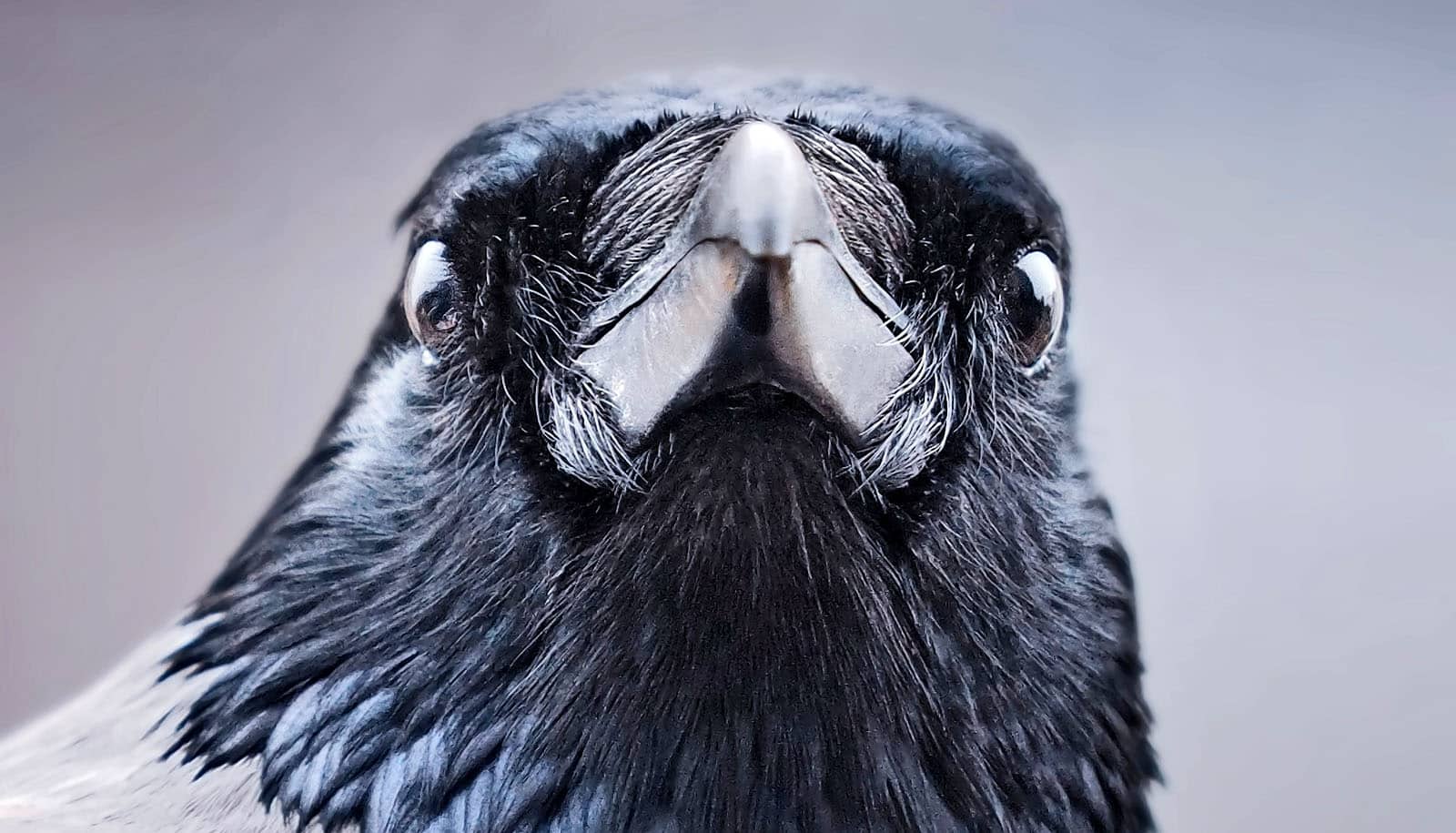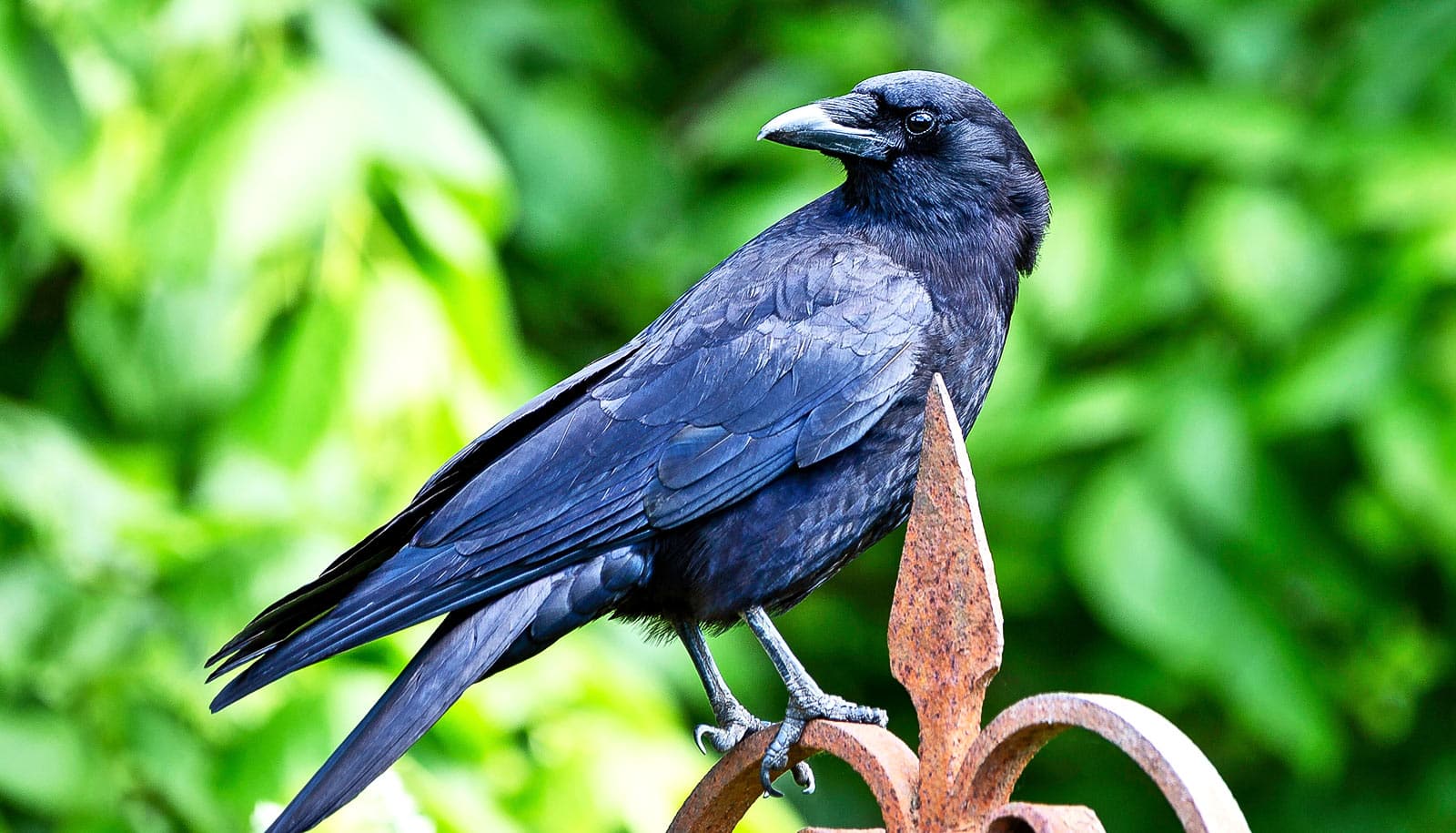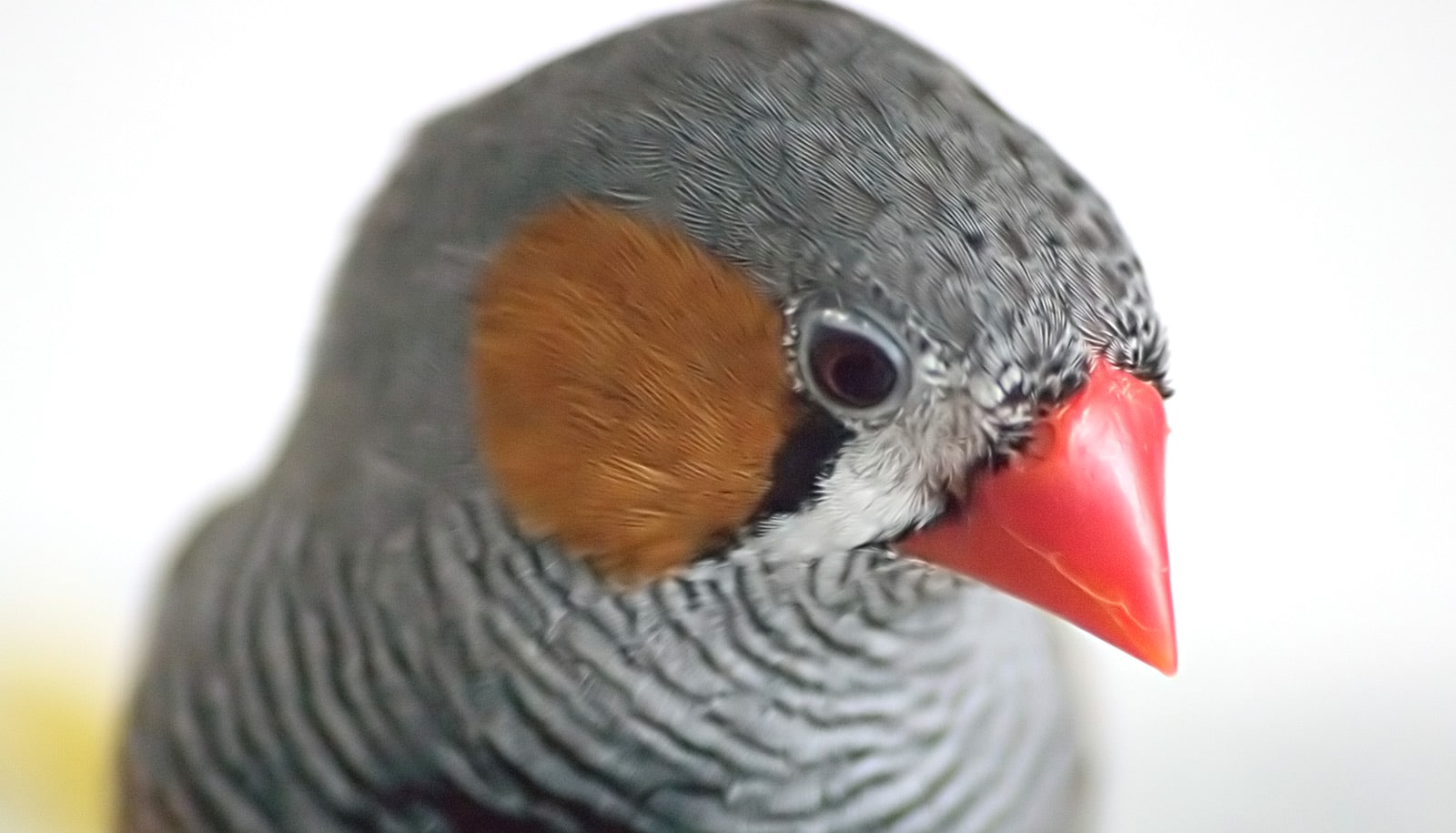Are some species of birds more innovative due to their larger brains or a greater number of neurons in specific brain areas? New research says some of each.
If you’ve ever seen a starling peck open a garbage bag or a grackle steal dog food, you get a sense that some birds have learned to take advantage of new feeding opportunities–a clear sign of their intelligence.
The new finding appears in the journal Nature Ecology and Evolution.
A carib grackle at the Bellairs research Institute in Barbados dunks dog pellets to make them more edible. (Credit: Louis Lefebvre/McGill)
Barbados bullfinch with sugar package. (Credit: Louis Lefebvre/McGill)
The researchers used a new technique to estimate the number of neurons in a specific part of the brain called the pallium in 111 bird species. The pallium in birds is the equivalent of the human cerebral cortex, which is involved in memory, learning, reasoning, and problem-solving, among other things.
When the researchers combined these estimates of neuron numbers in the pallium with information about over 4,000 foraging innovations, the team found that the species with the higher numbers of neurons in the pallium were also likely to be the most innovative.
“The amount of time fledglings spend in the nest as their brains develop might also play a crucial role in the evolution of intelligence,” says Louis Lefebvre, professor emeritus at McGill University who spent more than 20 years gathering examples of foraging innovations.
“Larger species of crows and parrots, that are known for their intelligence, spend longer in the nest, which allows more time for the brain to grow and accumulate pallial neurons.”
The results of the study help to reconcile previously opposed views of the evolution and significance of brain size and show how a life-history perspective helps to understand the evolution of cognition.
Source: McGill University



